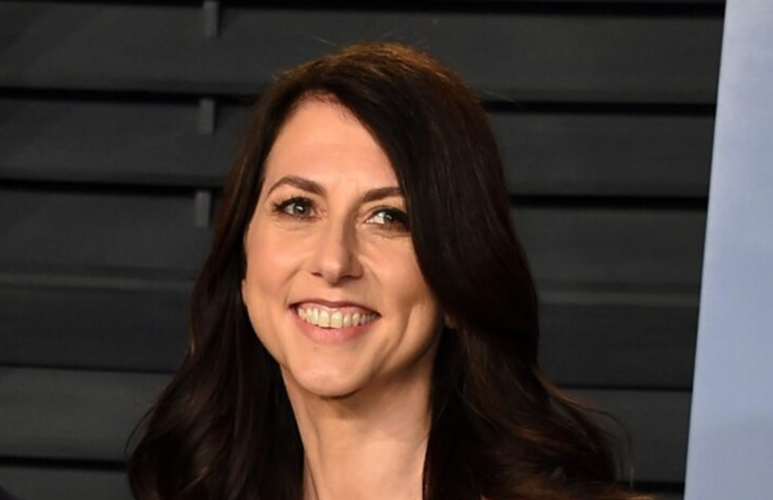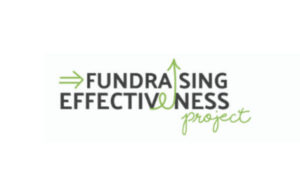Nonprofits benefiting from philanthropist MacKenzie Scott’s largesse have not seen a dampening effect on other donors’ generosity. In fact, fundraisers say the infusion of cash to their bottom lines has enhanced their credibility with traditional donors and made them that much more confident supporting organizations with enhanced prospects for long-term success.
New data from the Center for Effective Philanthropy (CEP) in Cambridge, Massachusetts shows the jury might still be out on the long-term impact of Scott’s more than $14 billion and counting in unrestricted gifts. However, concerns might have been overblown regarding the power of her unconventional approach to philanthropy proving to be too much of a good thing.
In the 70-page report, titled Emerging Impacts: The Effects of MacKenzie Scott’s Large, Unrestricted Gifts, CEP researchers updated findings from last year’s data, which was the first year of a three-year study. The intention is to track the impact of Scott’s gifts. This second report, released today, builds on last year’s report with responses from roughly 40% of the more than 1,600 organizations that received gifts from Scott since she joined The Giving Pledge four years ago.
“What’s striking is that not only do we see no evidence of unintended negative consequences, but organizational leaders are pretty confident in their ability to avoid problems going forward,” CEP President Phil Buchanan told The NonProfit Times.
Notable early fears voiced by observers were that nonprofits where managers were unaccustomed to handling such large gifts might face a financial cliff, described by Buchanan as “this idea that organizations would staff up and be unable to sustain the level of revenues required to support the larger cost structure they created.” The unrestricted nature of the gifts and lack of a required timeframe for spending the funds might be having the opposite effect, affording leaders discretion to use some of the funds to shore up current programs while investing the rest for long-term needs.
“We only know what we know at this moment in time,” Buchanan said. “But what we hear from leaders is they don’t feel the same pressure that typically comes with receiving grants where ‘you have to spend it all within three years’ and then don’t know what’s going to happen after. That problem no longer exists for them.”
More than 80% of leaders have used Scott’s grantmaking to bolster operational capacity including programs, staffing, technology, and physical space. About 35% have reported using some of the funds to increase existing staff salaries and another 20% have done the same for benefits, according to CEP Research Director Ellie Buteau, who oversaw the study.
And yet, the transformational effect of Scott’s philanthropy might transcend the dollar amount of the gifts. According to the researchers, 68% of respondents said the halo effect of receiving a gift from Scott has boosted organizational cachet and credibility in the eyes of other donors. Of those respondents, 33% are asking for more unrestricted grants than previously and 31% are asking for larger grants than they have in the past.
Said one respondent: “It’s a badge of honor when you can say to a prospective donor, ‘We were one of the few that got a MacKenzie Scott gift.’ People say, ‘Well, you must be considered a sound institution, so let’s talk.’”
This was underscored by the 48% of respondents who said receiving a grant from Scott had made additional fundraising somewhat easier (43%) or much easier (5%). An additional 38% said it has had no effect. Only 14% said fundraising has become more difficult.
Jamie Allison, executive director of the Walter and Elise Haas Fund in San Francisco, offered some insight into into the results. The foundation did not fund or participate in the study but has partnered with CEP on other programs as both a funder and client. “Most nonprofits are chronically underfunded and are hampered by modest-sized annual grants for which they have to reapply and reapply. Too often, this results in too much energy going toward administration and fundraising and not enough toward programs,” Allison told The NonProfit Times.
Allison, whose foundation typically awards gifts totaling between $10 million and $13 million per year, said she would be “thrilled” if one of its grantees were to receive additional funding from MacKenzie Scott or another source. “It might change the conversation about the role of the support we provide, but I do not believe that would be a deterrent to us continuing to support that organization at all,” Allison said.
For all her generosity, Scott has endured some criticism with respect to the lack of transparency of her grantmaking and criteria for selecting recipients. Organizations receiving gifts from Scott between 2020 and 2022 were, on average, much larger than the typical nonprofit with a median annual budget of $6.5 million and median staff size of about 50, according to the authors.
“By contrast, in a CEP dataset containing data from thousands of grantees that receive grants from larger foundations, the median nonprofit size is $1.7 million. More broadly, most nonprofits in the U.S. operate with a budget of $500,000 or less,” the researchers wrote.
About 25% of respondents reported regranting some of the funds to other organizations or said they plan to do so. Still, “these are huge grants she’s giving out and they’re typically going to larger than average organizations. And part of the critique has been that smaller organizations aren’t being given the same opportunity,” Buchanan said.
Earlier this year, Scott announced an open call for other nonprofits with annual budgets between $1 million and $5 million to apply for one of 250 grants she plans to issue in the amount of $1 million each. More than 6,300 applicants responded. The size of the applicant pool means fewer than 4% will end up receiving grants at the conclusion of the process, which is being administered in partnership with Chicago-based Lever for Change.
“And some folks are still asking what about the smaller organizations with operating budgets of less than $1 million,” Buchanan said. “These are all very interesting critiques and debates, but it’s outside the scope of our research. Our research is simply focused on the experience of those that have received these grants.”
Whether other donors might take their cues from Scott’s example and be inspired to ramp up their own unrestricted giving is another open question. “It’s definitely made a huge splash and been a hot topic of conversation for other funders,” said Allison.
A number are now taking steps toward evolving their own grantmaking practices including the Walter and Elise Haas Fund, which is the midst of a pilot program to award fewer and larger grants over a longer time horizon in hopes of maximizing the impact of each grant. The program will award seven-year grants totaling $3.5 million each to nonprofits working to address racial and gender wealth gaps. The $500,000 per-year commitment is a bold step for a foundation that until recently had been in the practice of approving annual awards of about $50,000 each for usually no more than a year or two at a time.
“I wouldn’t say MacKenzie Scott’s giving has been the only factor behind it, but the cumulative impact of her giving and the advent of trust-based philanthropy have definitely had an impact,” Allison said. The foundation’s new approach to grantmaking is a response to what Allison described as “just listening to what nonprofits have been telling us for years about the importance of unrestricted gifts and multi-year support.”
The impact of Scott’s challenge to traditional grantmaking practices will be the subject of continued study into next year, Buchanan said. “She’s definitely challenged the default settings of many big donors by giving big and giving with a lot of humility and respect for the knowledge and abilities of the leaders doing great work in communities across the country and around the world,” he said. “And the organizations have some pretty interesting stories to tell about the difference her grants are making.”
The full 70-page report can be viewed on the CEP website.












